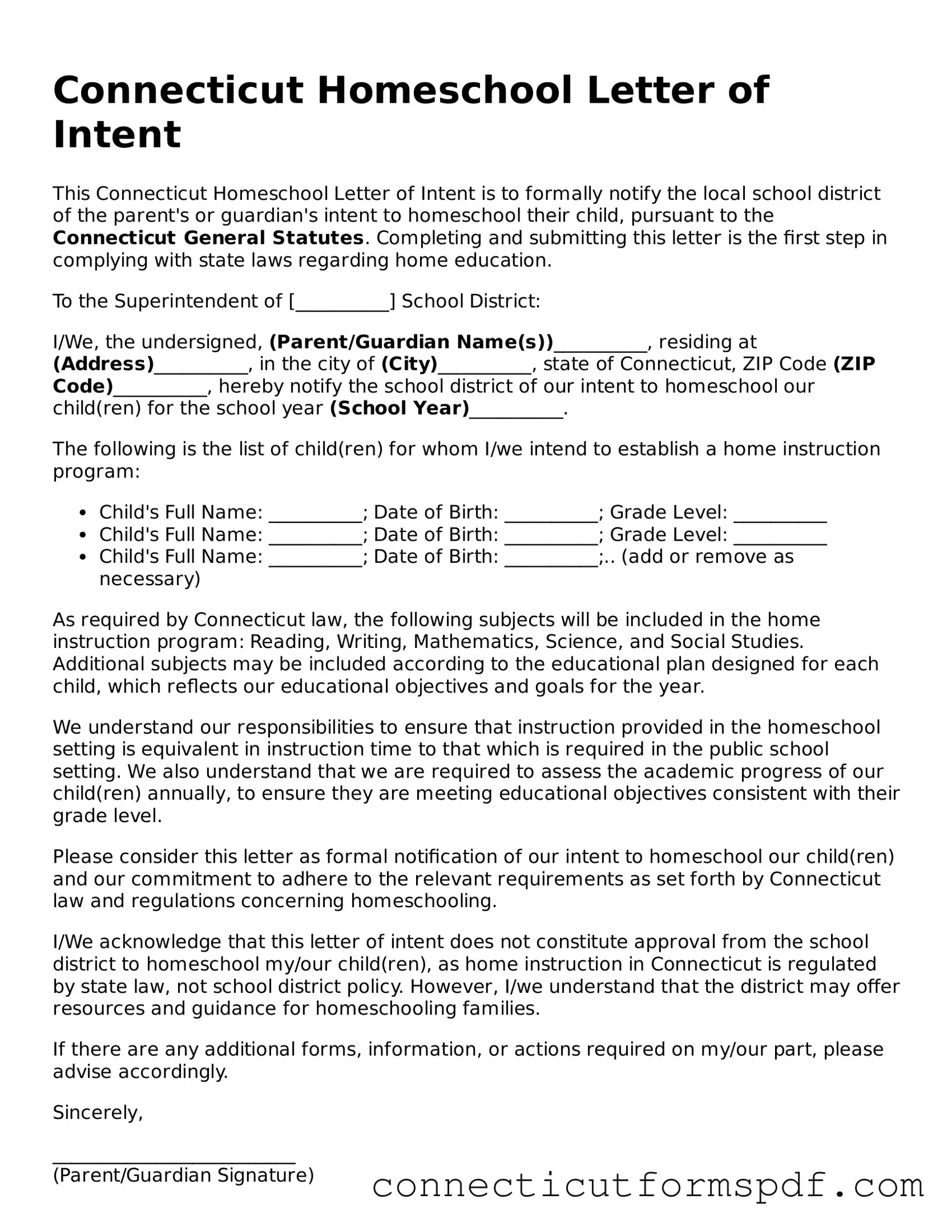Connecticut Homeschool Letter of Intent
This Connecticut Homeschool Letter of Intent is to formally notify the local school district of the parent's or guardian's intent to homeschool their child, pursuant to the Connecticut General Statutes. Completing and submitting this letter is the first step in complying with state laws regarding home education.
To the Superintendent of [__________] School District:
I/We, the undersigned, (Parent/Guardian Name(s))__________, residing at (Address)__________, in the city of (City)__________, state of Connecticut, ZIP Code (ZIP Code)__________, hereby notify the school district of our intent to homeschool our child(ren) for the school year (School Year)__________.
The following is the list of child(ren) for whom I/we intend to establish a home instruction program:
- Child's Full Name: __________; Date of Birth: __________; Grade Level: __________
- Child's Full Name: __________; Date of Birth: __________; Grade Level: __________
- Child's Full Name: __________; Date of Birth: __________;.. (add or remove as necessary)
As required by Connecticut law, the following subjects will be included in the home instruction program: Reading, Writing, Mathematics, Science, and Social Studies. Additional subjects may be included according to the educational plan designed for each child, which reflects our educational objectives and goals for the year.
We understand our responsibilities to ensure that instruction provided in the homeschool setting is equivalent in instruction time to that which is required in the public school setting. We also understand that we are required to assess the academic progress of our child(ren) annually, to ensure they are meeting educational objectives consistent with their grade level.
Please consider this letter as formal notification of our intent to homeschool our child(ren) and our commitment to adhere to the relevant requirements as set forth by Connecticut law and regulations concerning homeschooling.
I/We acknowledge that this letter of intent does not constitute approval from the school district to homeschool my/our child(ren), as home instruction in Connecticut is regulated by state law, not school district policy. However, I/we understand that the district may offer resources and guidance for homeschooling families.
If there are any additional forms, information, or actions required on my/our part, please advise accordingly.
Sincerely,
__________________________
(Parent/Guardian Signature)
__________________________
(Second Parent/Guardian Signature, if applicable)
Date: __________
